Capital:
Chandigarh
Currency
Rupee
Best time to visit:
Winter (November to February) is generally the best time to visit northern India, although the night tends to get cold in Delhi and the northernmost regions. From April to June the heat is unbearable both in the northern plains and in the center of the country: it is advisable to head towards the Himalayan region. It is advisable to avoid the monsoon rains that begin in June and can last until September.
In a word:
Namaste (I bow down to you)
Vaccines
Recommended Antitifica, Antimalarial Prophylaxis (chloroquine-resistant). In many regions, especially in the north-eastern states, malaria is present all year below 2000 m.
Warnings:
- Hygiene is low and diseases caused by water or food are common.
- Avoid ice cubes and fruit juices diluted with water.
- Avoid raw fruits and vegetables.
- Use only bottled water.
- Sometimes the big cities are overwhelming: the traffic is heavy and it is dangerous even to cross the street.
- Watch out for monkeys who can be aggressive, especially in Varanasi.
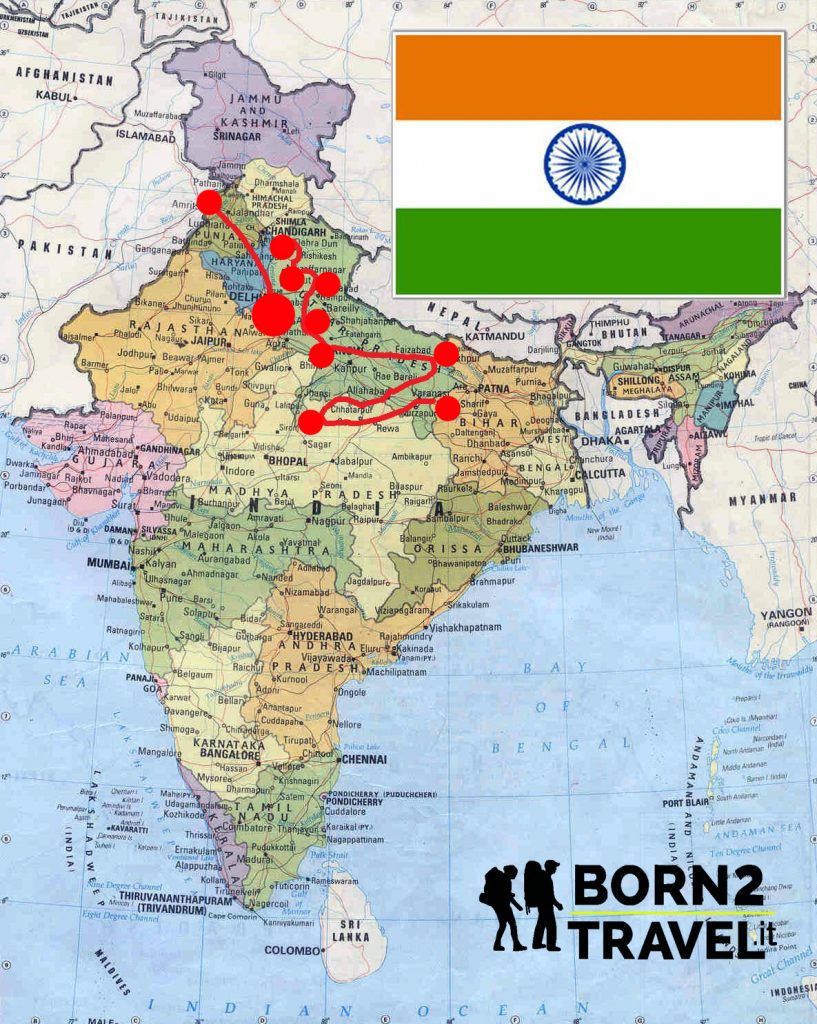
At the table:
Indian cuisine can be super spicy! You will gladly eat rice, naan, paratha (flatbread-like bread), chapati and lassi (yogurt drink); young palates will appreciate pakora (battered and fried vegetables), dosa (savory crepes) and idli (rice cakes). Among the desserts: kheer (rice pudding) and kulfi (milk ice cream)
Essential experiences:
Spend whole days in the Golden Temple among Sikh believers; Cooking and washing dishes with Sikh volunteers inside the Gurdwara; Attend the folkloristic changing of the guard on the border between India and Pakistan.
In Punjab you breathe an atmosphere totally different from that of the rest of India. We completely abandoned ourselves to the experience of living for a few days inside the Golden Temple; we meditated, we cooked, washed the prawns, ate together with these men with long beards and colored turbans who, at the beginning, could arouse a little fear but which, later, discover being the best in the world.
Amritsar! Punjab with its Sikhs! Punjab, ( five waters ), from the name of the five rivers that cross it and make it very fertile.
Sikhism has always intrigued me… this movement was born in the fifteenth century by Guru Nanak.
They believe in the family and in the value of work and merit. The Sikhs are distinguished by the five " kakkar " (emblems):
We admire the spectacular Golden Temple, this Gurdwara gilded copper laminate that rises brightly in the center of its sacred lake like a gold bar and attracts millions of pilgrims from all over world!
Amritsar is located less than 30 km from the border with Pakistan: Wagah.
On board a shared taxi we go there to watch the picturesque changing of the guard and the closure of the two borders.
Every day, just before sunset, the Indian and Pakistani guards meet on the border to create a theatrical ceremony.
The closure of the border and the flag amine are a mix of colonial military display, patriotic pride and comical march to the goose step.
On one side there is an immense Indian audience joyous and waving waving Hindu flags and banners, applauding loudly and repeating slogans such as " Hindustan Zindabad ... on the other hand, instead, a more audience composed, women with veils and men in light tunic clap but without too much enthusiasm ...
The two guards march, throwing their legs up so high that it almost seems to hit their faces ... they march opposite each other and it almost seems like a race to those who manage to throw their legs higher ... the audience is in turmoil, worse than a final of cricket, the soldiers strutting and proud ... in the end the command officers of both countries shake hands, exchange their military salute as they lower the flags ... the two gates close again ... the border is now closed for the night.
We go back to Amritsar Amritsar and we stop for dinner at the "Subash Juice Bar", guests of one of our contacts: Sameer.
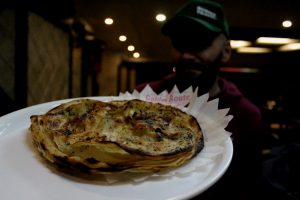 Our friend praises us so much the kitchen of Punjab and makes us taste numerous specialties from theamritsari kulcha (a type of bread made from maida flour) to chana (spiced chickpeas), from punjabi thali to paratha (a complicated bread in several layers) to the tasty desserts: matka kulfi faluda (almond ice cream with noodles) and a great one lassi.
Our friend praises us so much the kitchen of Punjab and makes us taste numerous specialties from theamritsari kulcha (a type of bread made from maida flour) to chana (spiced chickpeas), from punjabi thali to paratha (a complicated bread in several layers) to the tasty desserts: matka kulfi faluda (almond ice cream with noodles) and a great one lassi.
We like to completely immerse ourselves in the realities of every place we visit and live ... today we have done it 100%
After a brief visit to the Golden Temple museum, we head towards the kitchens where, in the queue, they give us an iron tray and some cutlery ... they make us sit in a big room where hundreds of people sit down consuming your own meal ...
We are also on the ground jute strip and, with our tray in our hands, we await the volunteers who fill it with an excellent thali ... we are here ... all together ... all the same ...
At the base of Sikhism is the belief in the equality of all beings including the " langar ", where people of all kinds, regardless of caste or religion, sit side by side for have a meal prepared by volunteers in the kitchen of the Gurdwara (Sikh temple) ...
We eat everything and, once finished, we place the dirty dishes in big steel baskets ... we read that there is the opportunity to join the volunteers to wash the dishes and cutlery and we don't think twice: Stefy and Elisa we find ourselves behind some tubs with a sponge in hand to wash hundreds and hundreds of plates and cutlery among dozens of women in colorful sarhi ...


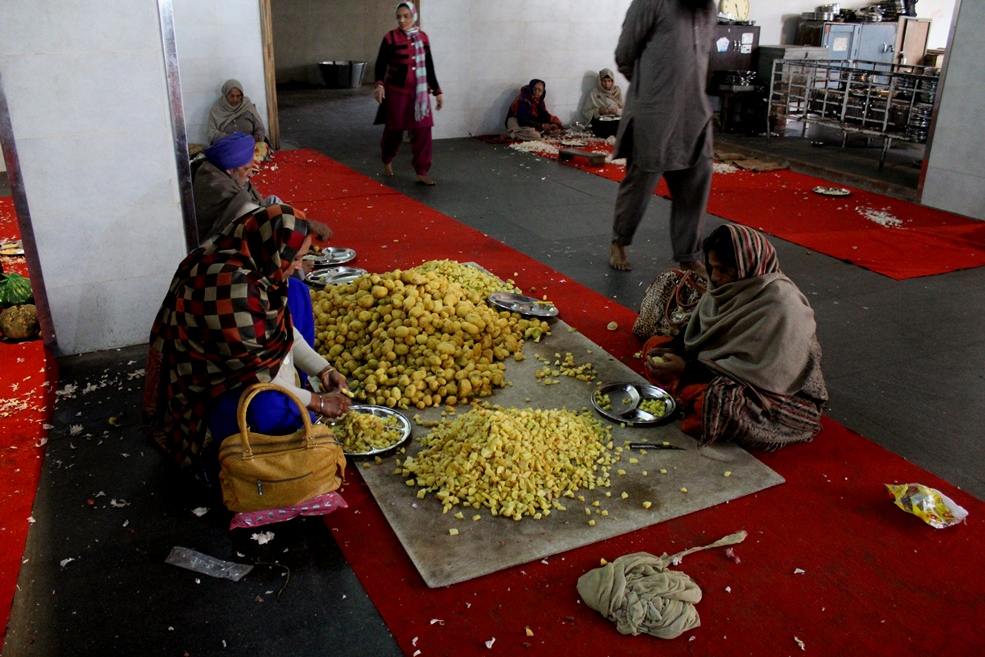
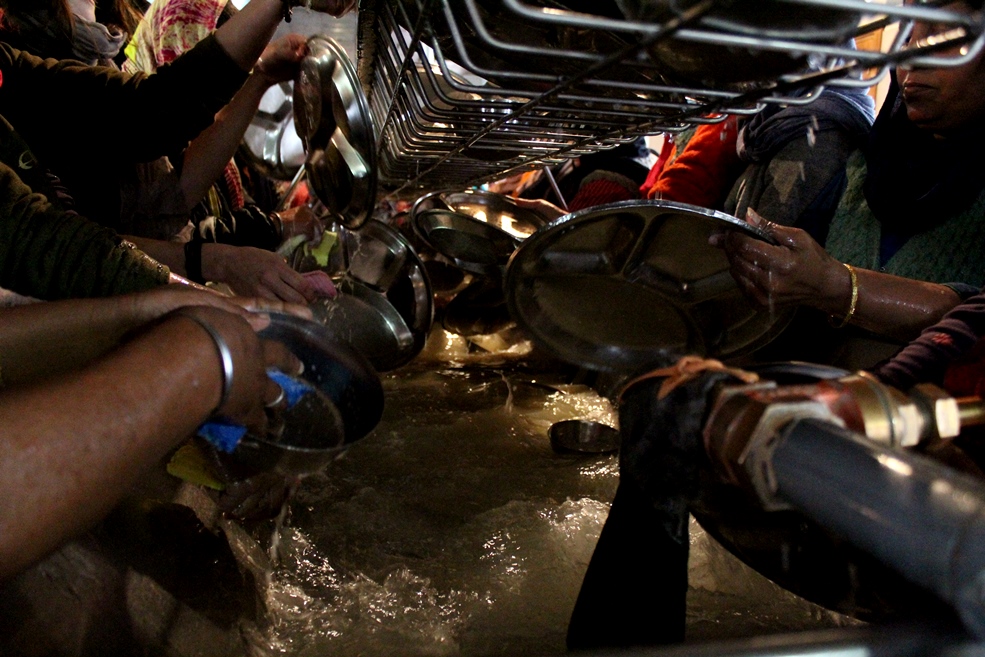
After getting our hands wet for a while, we go upstairs where men and women spread the chapatis on large wooden boards ... we sit down and start rolling out some pasta too, and then cook it on the plates. coal beside ...
Others cut potatoes, peeled garlic, chopped ginger ... a succession of scents and colors ... in another department there were kitchens where various Sikhs made long ladles in huge steaming pots ... think that here are prepared about 70,000 meals a day ...
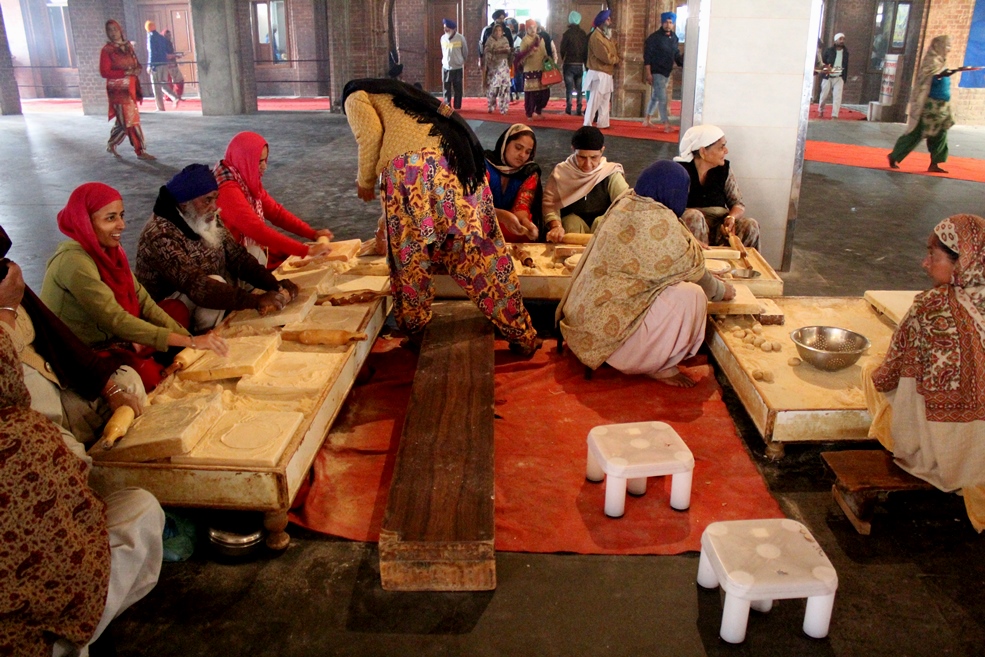

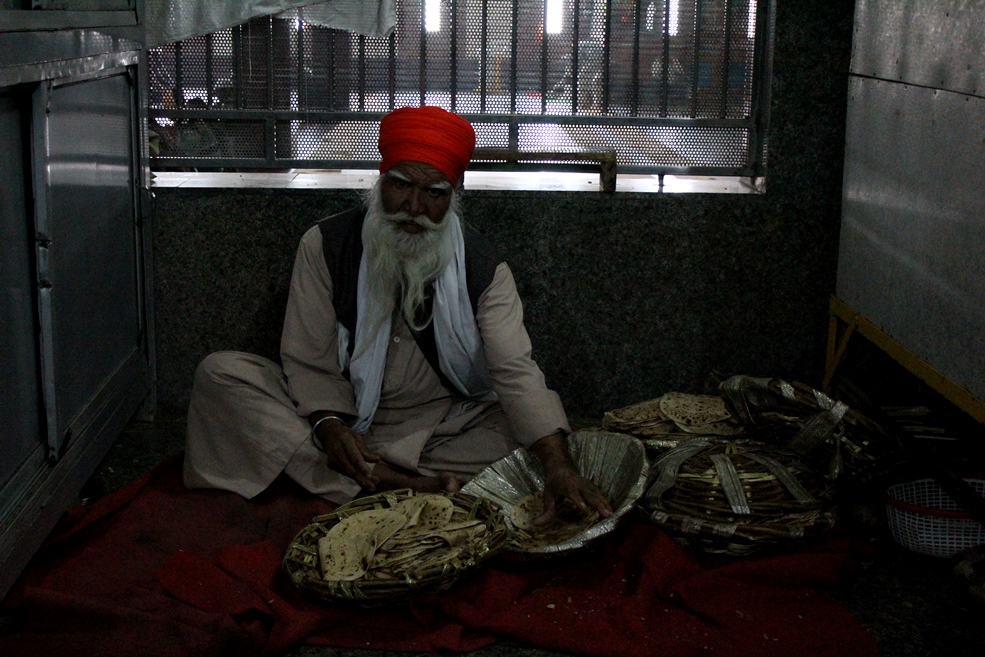
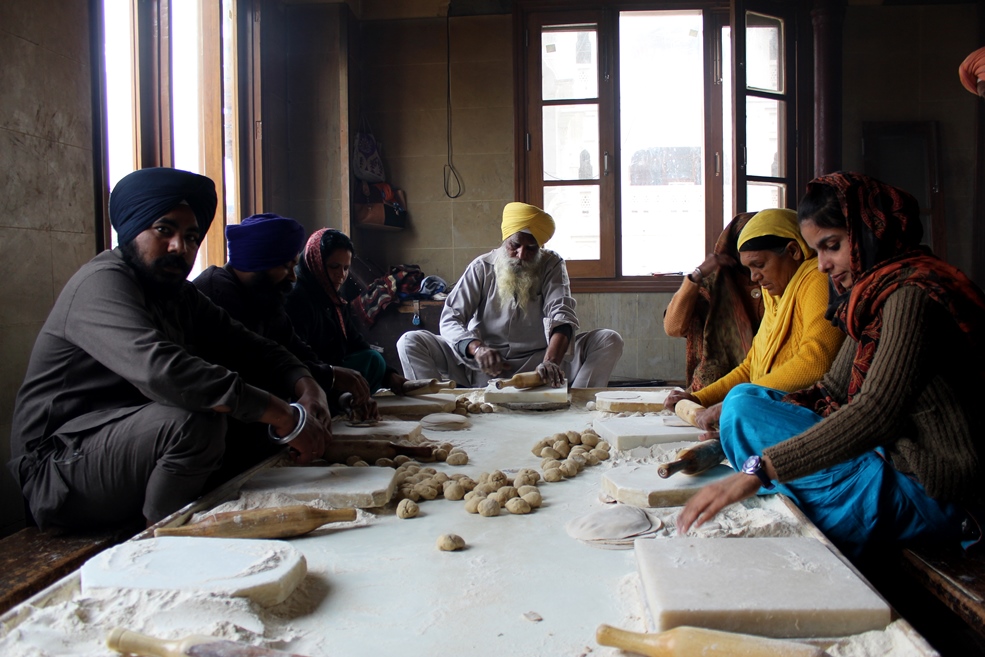
In the evening we can set foot inside the majestic Golden Temple... we enter ... the eyes no longer know where to look, it is all gold, it seems of another world ... on the ground there are the Sikh priests who sing, others play sitar or a golden piano, one waving a large palm, it is all very suggestive and moving, like goose bumps.
But today we leave this land, headed for the capital.
Train journeys in India are an experience to try ...
The journey becomes sharing, conviviality ... we go up to Amritsar on the usual old night train ... this time we will be on board only 10 hours ... with us there is a large group of 60 year olds returning from Kashmir towards Bombay (they will arrive at their destination in two days) ...
They immediately offer us bowls of dhaal with rice and chapati and between selfies, Hindi songs and stories we spend pleasant hours in good company ...
New Delhi welcomes us with its most modern chaos, less rickshaws but endless tuk tuks ... but this is already another story!
Error: No feed found.
Please go to the Instagram Feed settings page to create a feed.

Mongolia Capitale: Ulan Bator Moneta: Tugrik Periodo migliore: Il periodo